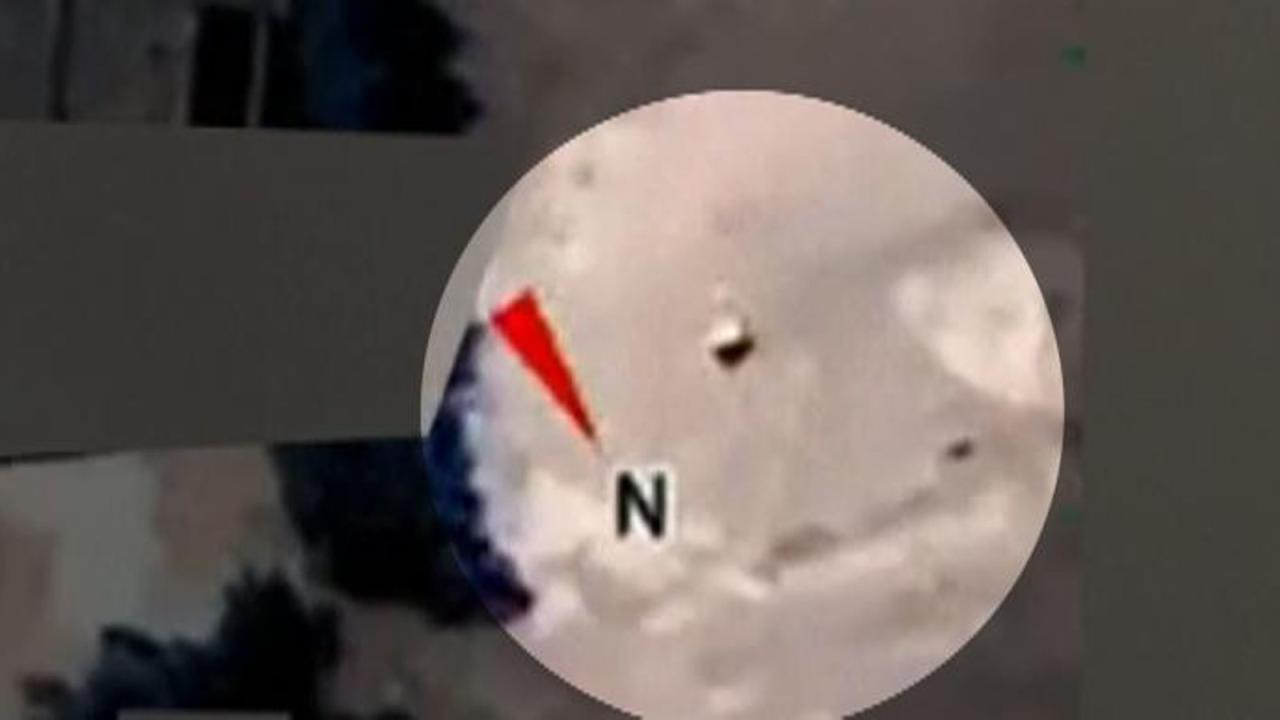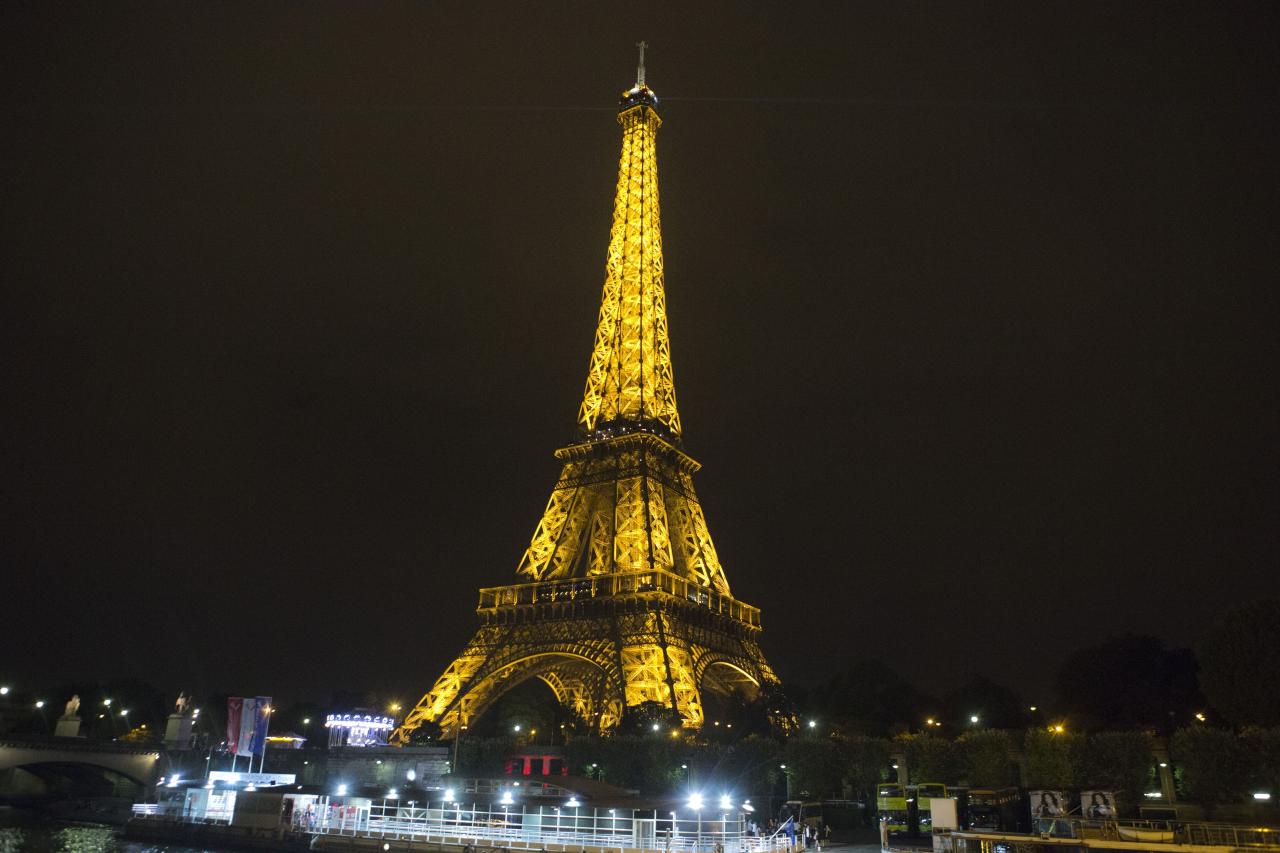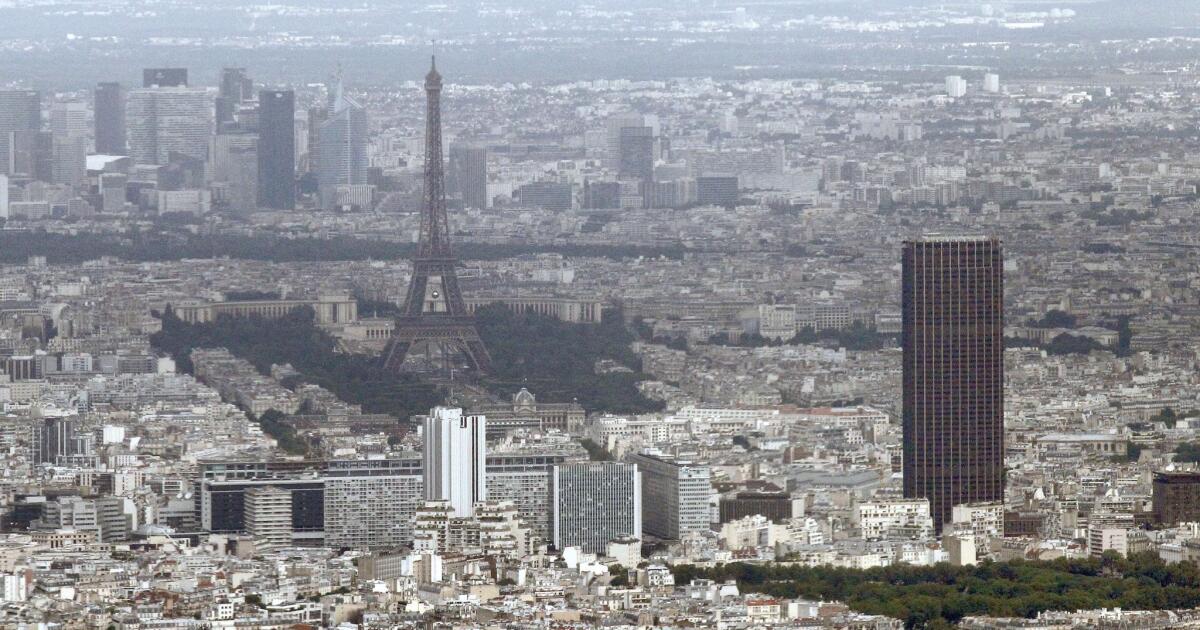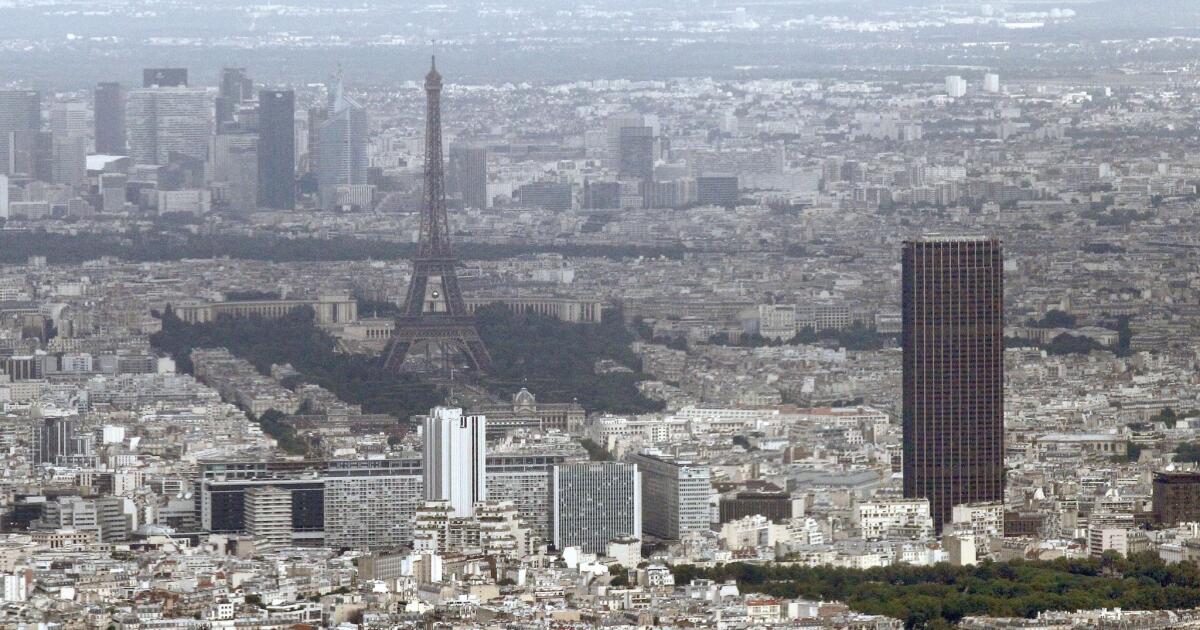Mystery Drone Paris: A silent, enigmatic object has been spotted in the skies above the City of Lights, sparking a whirlwind of speculation and intrigue. Its unexpected appearance has ignited a firestorm of debate, with experts and amateur sleuths alike scrambling to decipher its purpose, origin, and the implications of its presence. Was it a sophisticated piece of surveillance technology, a cutting-edge research tool, or something far more sinister?
The mystery unfolds.
This exploration delves into the specifics of the hypothetical drone, examining its potential capabilities and comparing it to existing commercial and military models. We’ll trace possible flight paths over iconic Parisian landmarks, explore potential launch points, and consider the various theories surrounding its purpose. Finally, we’ll look at the potential societal impact and the investigative steps needed to uncover the truth behind this aerial enigma.
The Drone’s Characteristics
The mysterious drone sighted over Paris presents a fascinating enigma. Its unusual flight patterns and apparent sophistication have sparked considerable speculation regarding its origin and purpose. To understand the potential implications, let’s delve into a detailed analysis of its possible physical attributes and technological capabilities.
That whole mystery drone thing in Paris is pretty weird, right? It makes you think about the potential for things to go wrong, like what happened at that orlando drone show accident. Accidents like that highlight the importance of safety regulations and proper drone operation, which are crucial for avoiding similar incidents with the Paris drones, and anywhere else for that matter.
The drone, as reported by multiple independent witnesses, appeared relatively small, approximately the size of a large hawk – perhaps 60-70 centimeters in wingspan. Its shape was described as vaguely triangular, with subtly curved edges, unlike the typical rectangular or quadcopter designs. The color was a dark, matte grey, making it difficult to spot against the Parisian sky.
A distinguishing feature was a series of small, evenly spaced lights along its leading edge, which pulsed with a faint, almost imperceptible glow. These lights weren’t flashing in a conventional strobe pattern, suggesting a sophisticated, possibly custom-designed lighting system.
Technological Capabilities of the Mystery Drone
Given its evasive maneuvers and apparent ability to remain undetected for extended periods, the drone likely possesses advanced technological capabilities. Its flight range is estimated to be significantly higher than commercially available drones, perhaps exceeding 100 kilometers, considering its prolonged flight time over a wide area of Paris. The high-resolution camera system, capable of capturing detailed images and video, suggests a potential surveillance or reconnaissance role.
The payload capacity, though unknown, is likely sufficient to carry sophisticated sensors or even small packages. The communication system is believed to be highly encrypted and robust, preventing interception and allowing for long-range, reliable data transmission. The drone’s ability to evade detection points towards advanced stealth technology, possibly incorporating materials designed to reduce its radar signature and infrared heat output.
This level of sophistication is not typically found in commercial drones.
Comparison with Known Drone Models
To better understand the mystery drone’s capabilities, it’s helpful to compare its characteristics with known commercial and military drone models. The following table highlights some key differences.
| Feature | Mystery Drone | Commercial Drone Example (DJI Matrice 300 RTK) | Military Drone Example (General Atomics MQ-9 Reaper) |
|---|---|---|---|
| Size | 60-70cm wingspan, triangular | ~10kg, quadcopter | ~11 meters wingspan |
| Flight Range | >100km (estimated) | ~40km | ~1850km |
| Camera Resolution | High-resolution (unspecified) | Variable, up to 8K | High-resolution, multi-spectral options |
| Payload Capacity | Unknown, likely small | Variable, up to 2.7kg | Variable, up to 1700kg |
| Communication System | Highly encrypted, long-range | OcuSync 3 Enterprise | Secure, long-range satellite communication |
| Stealth Capabilities | High, likely incorporates radar-absorbing materials | Low | Moderate to High, depending on model and configuration |
Possible Locations and Flight Paths

Determining the drone’s flight path and origin point is crucial to understanding its purpose and the events leading to its discovery. Analyzing potential routes over significant Parisian landmarks, along with identifying plausible launch sites, allows us to reconstruct a possible timeline and identify potential witnesses or security footage.
That whole mystery drone in Paris thing is pretty wild, right? It got me thinking about other drone incidents, like that time a drone crashed – you can read about it here: drone crash in paris – which makes you wonder if these mysterious drones are somehow connected to similar incidents. Maybe they’re all part of some bigger, crazier story.
Anyway, back to that mystery drone in Paris…
Potential Flight Paths over Parisian Landmarks
Several prominent Parisian landmarks offer compelling possibilities for drone flight paths, each with unique environmental considerations. The implications of each route depend heavily on air traffic regulations, visibility, and the drone’s capabilities.
Route 1: Eiffel Tower Circuit. Imagine the drone taking a circular path around the Eiffel Tower, capturing panoramic views. The environment here is highly populated, with significant pedestrian and vehicle traffic. Air space restrictions would be incredibly strict, and any flight would need to occur during periods of low air traffic or be authorized. The Champ de Mars, a large park surrounding the tower, provides a potential launch and recovery zone, but its crowded nature increases the risk of detection.
Route 2: Seine River Cruise. A flight path following the Seine River would offer stunning views of many landmarks. The environment along the Seine is a mix of bridges, buildings, and river traffic. Navigating the air space above the river would require careful consideration of the height restrictions near bridges and the movement of boats. The numerous bridges and quays along the river provide numerous potential launch and landing points, offering a degree of concealment.
Route 3: Louvre Museum and Tuileries Garden Flyover. A flight path starting near the Louvre Pyramid, then moving over the Tuileries Garden towards the Place de la Concorde would be visually striking. The environment here presents a blend of open space (the garden) and densely packed buildings. The high density of people in these areas makes covert operation difficult, but the large, open space of the Tuileries Garden might provide a degree of concealment for takeoff and landing.
Possible Drone Origin/Deployment Locations
Three locations stand out as plausible points of origin or deployment for the mystery drone. The choice of location would influence the drone’s flight path and the level of risk involved.
Location 1: Hotel rooftop near the Eiffel Tower. Many hotels in the area offer rooftop access, providing a relatively discreet launch point with a good view of the Eiffel Tower and surrounding areas. The presence of buildings would offer some degree of visual concealment, and the rooftop would provide a relatively stable launch platform. However, security cameras and staff presence are significant risks.
Location 2: Unassuming Apartment Building near the Seine. A less conspicuous location would be an apartment building with a balcony or window overlooking the Seine. This offers better concealment than a hotel rooftop but might require more complex navigation to reach the desired flight path. The challenge lies in gaining access to a suitable building and ensuring no one observes the launch or recovery of the drone.
Location 3: A secluded area along the Canal Saint-Martin. This canal offers a more secluded environment away from the city center’s high-traffic areas. Launching from a quieter area would minimize the risk of detection but would require a longer flight to reach prominent landmarks. The proximity to water adds another layer of complexity to the operation.
Map of Potential Flight Paths and Origin/Destination Points
A hypothetical map would depict Paris with its major landmarks clearly marked (Eiffel Tower, Louvre Museum, Seine River, etc.). Three colored lines would represent the potential flight paths described above, each originating from one of the three proposed launch locations and potentially ending at a similar recovery point, though this is not necessarily the case. The origin and destination points would be marked with distinct symbols (e.g., a star for origin and a circle for destination).
The map’s scale would be appropriate for visualizing the flight paths within the city’s boundaries. Key features like bridges, major streets, and parks would also be included to provide context and illustrate environmental considerations for each flight path. The map’s legend would clearly define the symbols and colors used. For example, the Eiffel Tower circuit might be depicted in red, the Seine River route in blue, and the Louvre/Tuileries route in green.
Each route would be labeled accordingly. This visualization would aid in understanding the spatial relationships between the potential flight paths, origin points, and Parisian landmarks.
Speculation on the Drone’s Purpose
The mysterious drone sighted over Paris presents several intriguing possibilities regarding its purpose. Analyzing its characteristics – size, flight patterns, and apparent technology – alongside its potential locations, allows us to formulate plausible theories. We’ll explore three key hypotheses: surveillance, scientific research, and criminal activity. Each theory has its own supporting evidence and weaknesses, making a definitive conclusion challenging.
Surveillance as the Drone’s Purpose
This theory posits the drone was deployed for surveillance purposes, potentially by a government agency or a private entity. The drone’s capabilities, assuming it possesses advanced optics and recording equipment, would make it ideal for gathering intelligence on specific locations or individuals. Its flight path, if it involved repeated passes over sensitive areas like government buildings or high-profile residences, would further support this theory.
Evidence supporting this could include the discovery of high-resolution images or video footage captured by the drone. Conversely, a lack of such footage, or a flight path seemingly random and lacking focus on specific targets, would weaken this hypothesis. Consider, for example, the use of drones by law enforcement agencies in other cities for crowd monitoring during large-scale events.
The Paris drone, if used similarly, might have targeted a specific protest or gathering.
Scientific Research as the Drone’s Purpose
Alternatively, the drone could have been used for scientific research purposes. This might involve atmospheric monitoring, environmental studies, or even urban planning research. The drone’s flight path, if it involved systematic data collection across various areas of Paris, could support this. If the drone carried specialized sensors or equipment for measuring atmospheric conditions, air quality, or other environmental parameters, this would be strong evidence.
A similar example is the use of drones by universities to study bird migration patterns or by environmental agencies to monitor pollution levels. However, if the drone’s flight path was erratic or focused on specific, non-scientific locations, this theory becomes less plausible.
Criminal Activity as the Drone’s Purpose
The possibility of the drone being used for criminal activity cannot be discounted. This could range from illicit surveillance for blackmail or espionage to aiding in the planning of a robbery or other crime. The drone’s characteristics, particularly its stealth capabilities and potential for carrying small payloads, make it suitable for such activities. Evidence supporting this theory might include links to known criminal organizations, the discovery of the drone near a crime scene, or the drone’s flight path coinciding with suspicious activity.
That whole mystery drone situation in Paris is pretty wild, right? It makes you wonder about the frequency of these incidents. To get a better understanding of drone-related mishaps in the city, check out this article on drone crashes in Paris. Learning about those crashes might shed some light on what could have happened with the mystery drone; maybe it wasn’t so mysterious after all.
For instance, the drone might have been used to scout a target for a future robbery, providing criminals with information on security measures and escape routes. However, the absence of such evidence would significantly weaken this hypothesis. The lack of any apparent damage or tampering to the drone itself would also make this theory less likely.
The Societal Impact and Public Reaction

The discovery of a mystery drone in Paris, a city steeped in history and a global hub of tourism and commerce, would undoubtedly trigger a wide range of societal reactions, depending heavily on the drone’s perceived purpose and the information released by authorities. Public perception would be shaped by the narrative presented by the media and the government’s response to the situation.The potential for widespread panic and disruption is significant.
A drone, particularly one exhibiting unusual characteristics or flight patterns, could be interpreted as a threat, especially in the context of heightened security concerns. Conversely, a less alarming narrative, focusing on technical malfunction or benign research, could lead to more curiosity and less fear. The speed and accuracy of information dissemination will play a critical role in shaping public opinion.
Public Reactions to Different Scenarios
Several scenarios could unfold, each eliciting a different public response. If the drone is linked to espionage or terrorism, fear and anxiety would likely dominate. Citizens might feel vulnerable and distrustful of authorities if information is withheld or perceived as inadequate. Social media would likely become a platform for speculation, conspiracy theories, and potentially even misinformation. In contrast, if the drone is deemed harmless, such as a lost research drone or a malfunctioning commercial device, the public response would likely be one of curiosity and perhaps amusement.
News coverage would likely focus on the unusual circumstances and technical aspects of the event. A third scenario, where the drone’s purpose remains unknown, would create uncertainty and speculation, leading to a mixed bag of fear, fascination, and potentially even excitement. The public might actively engage in attempts to solve the mystery.
Societal Impacts of the Drone’s Presence
The presence of the mystery drone and subsequent investigations could have several significant societal impacts. The most immediate impact would be on security and public safety. Increased security measures, such as enhanced surveillance and stricter drone regulations, are almost certain. This might lead to debates about privacy versus security, especially considering the extensive use of CCTV cameras in Paris.
Economically, the incident could impact tourism. Negative media coverage could deter visitors, while a positive resolution might generate curiosity and even boost tourism. Depending on the drone’s purpose, the incident could also spur technological advancements in drone detection and countermeasures. Finally, the incident could spark public discussions on the ethical implications of drone technology and its potential misuse.
For example, a similar incident could increase the urgency for international cooperation on drone regulations.
Stakeholder Actions in Response to the Drone Sighting
The government’s response would likely involve multiple agencies. The police would be responsible for securing the area and investigating the drone’s origin and purpose. Intelligence agencies might be involved if espionage or terrorism is suspected. The government would also be responsible for communicating with the public, providing updates, and addressing concerns. The media’s role would be crucial in shaping public perception.
News outlets would report on the incident, providing updates, conducting interviews, and analyzing the situation. Their coverage could range from sensationalized reporting to more balanced and fact-based journalism, significantly impacting public opinion. Finally, technology companies involved in drone manufacturing and development might face scrutiny, leading to potential investigations into their security protocols and supply chains. This might even influence future regulations and industry standards.
Investigative Approaches: Mystery Drone Paris

Uncovering the mystery of the Paris drone requires a multi-pronged investigative approach, combining technical expertise with meticulous detective work. The investigation would need to systematically trace the drone’s origin, its flight path, and ultimately, its operator. This process involves a careful combination of forensic analysis and investigative techniques.
Drone Recovery and Initial Examination
The first step would involve securing the drone itself, if possible. A thorough physical examination would be conducted, looking for identifying marks, serial numbers, or any other unique features that could link it to a manufacturer or specific owner. Investigators would meticulously document any damage to the drone, as this might provide clues about the circumstances of its flights.
They would also carefully collect any trace evidence, such as fingerprints, fibers, or biological material, for DNA analysis. This physical evidence forms the foundation of the investigation.
Flight Data Analysis
Modern drones often record substantial flight data, including GPS coordinates, altitude, speed, and even images or videos captured during flight. Accessing and analyzing this data is crucial. Investigators would employ specialized software to reconstruct the drone’s flight path, identifying key locations and potential take-off and landing points. Analyzing the timestamps associated with the flight data can help establish a timeline of events.
The analysis of any onboard video or imagery might reveal details about the drone’s surroundings and potentially the operator.
Forensic Techniques
Several forensic techniques would be employed. For example, a detailed examination of the drone’s internal components could reveal modifications or custom firmware that might indicate unauthorized use or specific operational parameters set by the operator. Digital forensics experts would analyze the drone’s memory chips and storage devices to extract any data that might have been recorded or stored, including communication logs or control signals.
Network analysis might reveal the communication protocols used by the drone and identify any associated networks or IP addresses, potentially leading to the operator.
Tracing the Drone’s Origin, Mystery drone paris
Investigators would attempt to trace the drone’s origin by using its serial number or unique identifiers to contact the manufacturer. This information, combined with purchase records or warranty information, could help identify the original purchaser. If the drone was modified or had non-standard components, identifying the source of those parts could also prove invaluable.
Public Information and Witness Statements
Gathering information from the public is also a key element. Investigators would release images or videos of the drone to the public, asking for any information that might help identify the operator or their motives. They would also interview potential witnesses who may have observed the drone’s flights or seen anyone operating it. This crowdsourced information can be vital in piecing together the puzzle.
Investigative Flowchart
A simplified flowchart of the investigation could look like this:[Imagine a flowchart here. The flowchart would start with a box labeled “Drone Discovery,” leading to boxes representing: “Secure Drone,” “Physical Examination,” “Flight Data Analysis,” “Forensic Analysis,” “Trace Drone Origin,” “Public Information Gathering,” and finally, “Identify Operator/Resolution.”] Each box would have arrows connecting it to the next logical step.
The flowchart visually represents the interconnected nature of the investigation’s various stages.
Last Word
The mystery drone over Paris remains a captivating puzzle. While the specifics of its design and purpose remain shrouded in secrecy, its appearance highlights the evolving technological landscape and its potential implications for security, privacy, and public perception. The investigation, both real and hypothetical, underscores the need for advanced surveillance and counter-drone measures, as well as a thoughtful consideration of the ethical and societal implications of unmanned aerial vehicles.
The mystery, however, continues to inspire debate and wonder, leaving us to ponder the unknown.
Essential FAQs
What types of cameras might a mystery drone possess?
High-resolution cameras capable of both still images and video recording, possibly with thermal imaging or other advanced sensors, are likely.
Could the drone have been used for espionage?
Yes, its potential for surveillance and data collection makes espionage a strong possibility, depending on its capabilities.
What legal ramifications could result from the drone’s operation?
Depending on its purpose and the laws violated, penalties could range from fines to imprisonment for those responsible.
How might the public react if the drone’s purpose is revealed to be malicious?
Public reaction could range from outrage and fear to demands for increased security measures and stricter drone regulations.
